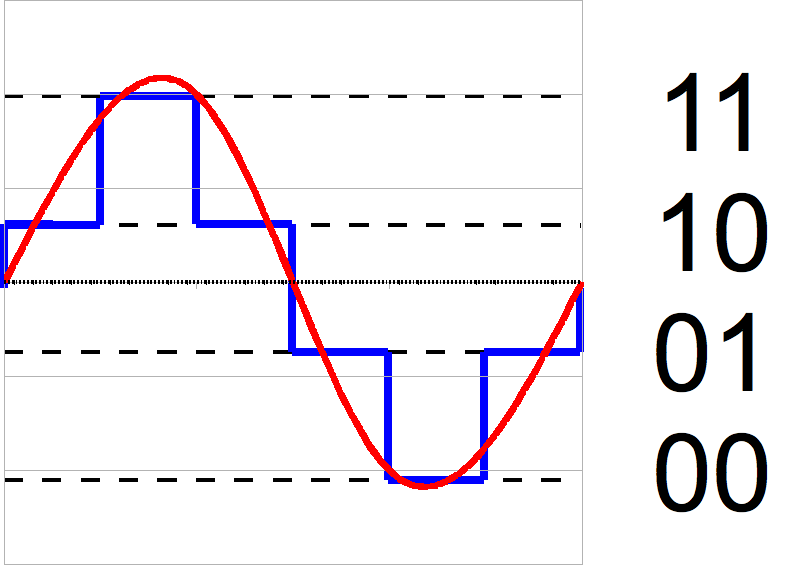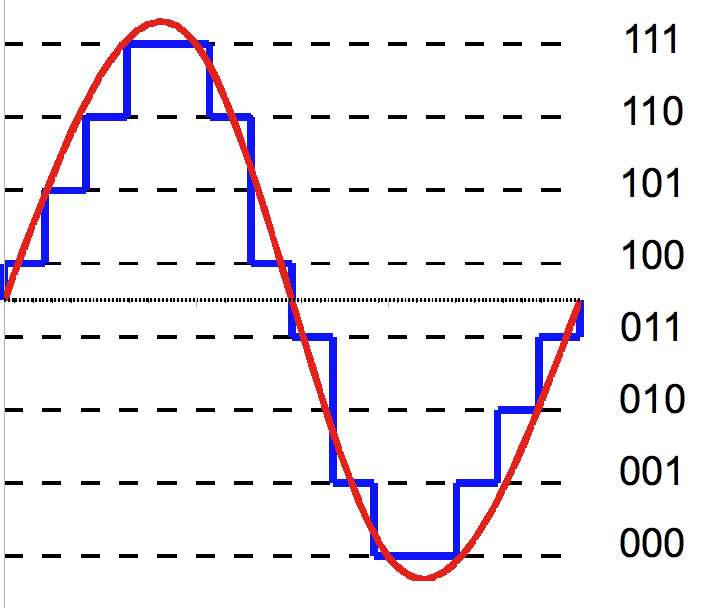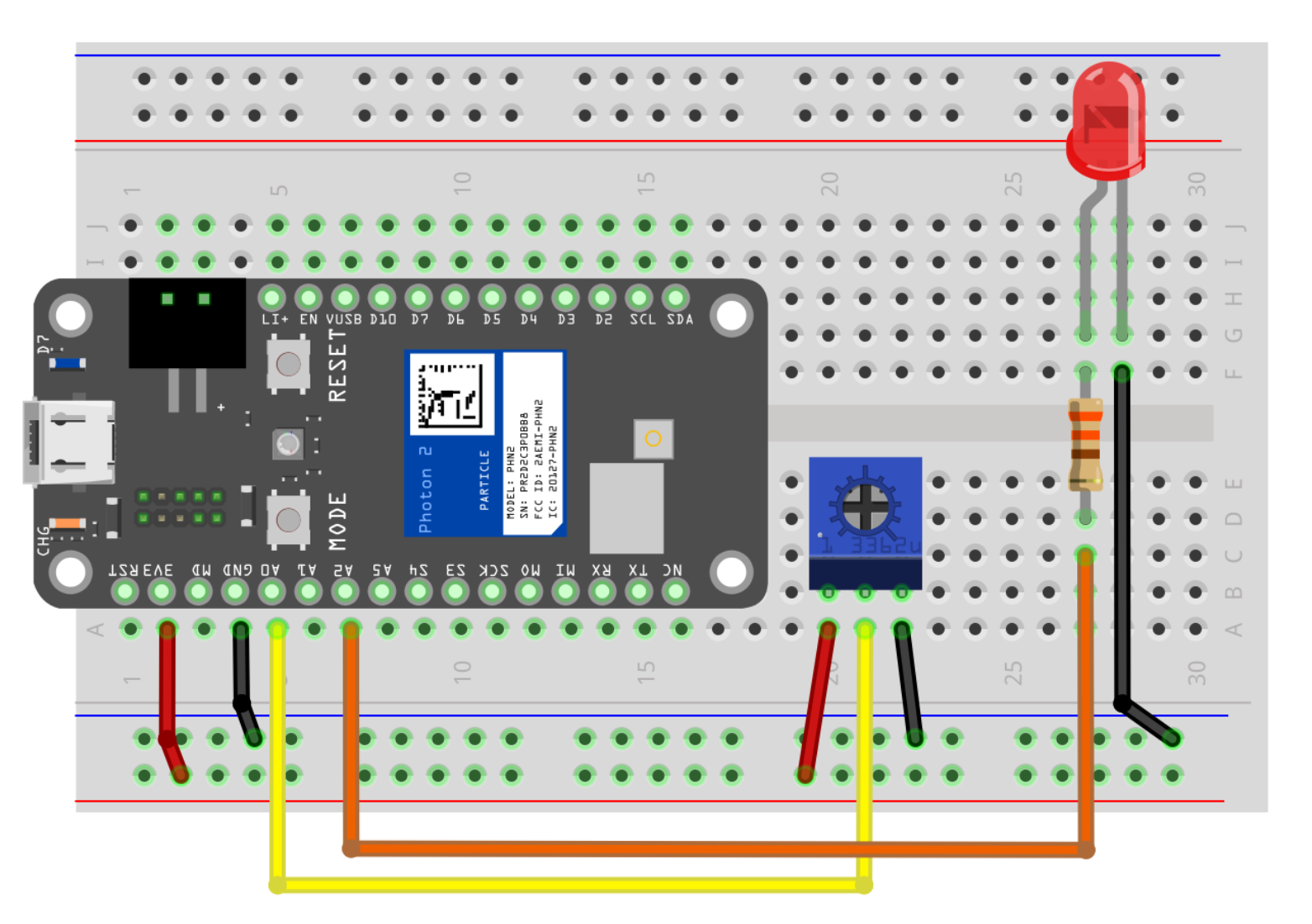Analog to Digital Conversion
Analog to Digital Conversion
Analog vs. Digital
- Analog: infinite variations / states
- Digital: discrete (or finite) states
- How do we represent infinite variations in a system that has limited / finite values?
Analog to Digital Conversion
- Photon 2 is a digital system so we need to convert the infinite analog input to a discrete values
- At regular intervals, the Photon 2 samples (“reads”) voltage on analog input pin it sees
- The sampling frequency is how many times per second
- The resolution is how many bits are used to store the voltage
- Higher resolution means greater detail, but also more bits (more memory)
Understanding Resolution


- Red line is actual analog input voltage (in volts)
- Blue line is the digital sample value (just a number with no units)
Photon 2 ADC Resolution is 12-bits
- When we read the analog input voltage, ADC converts the voltage to a number
- There 2^12=4096 possible values (think “buckets”)
- In Binary
- 0 = 000000000000
- 4095 = 111111111111
ADC Pins
A0A1A2A5A3(SDAorD0)*A4(SCLorD1)*
You can use either of these pins labels
Photon 2 ADC
- The range of analog voltage is 0v to 3.3v
- The range of digital values is 0 to 4095
- Q: How many digital values per 1v?
- Q: How many volts per each digital value?
- Q: If there is 3.3v on an analog input, what is the value of
analogRead()? - Q: If there is 1.67v on an analog input, what is the value of
analogRead()?
Exercise

- Connect potentiometer to A0
- Connect LED to pin A2 (do we need a pin with PWM?)
- Control LED brightness with potentiometer